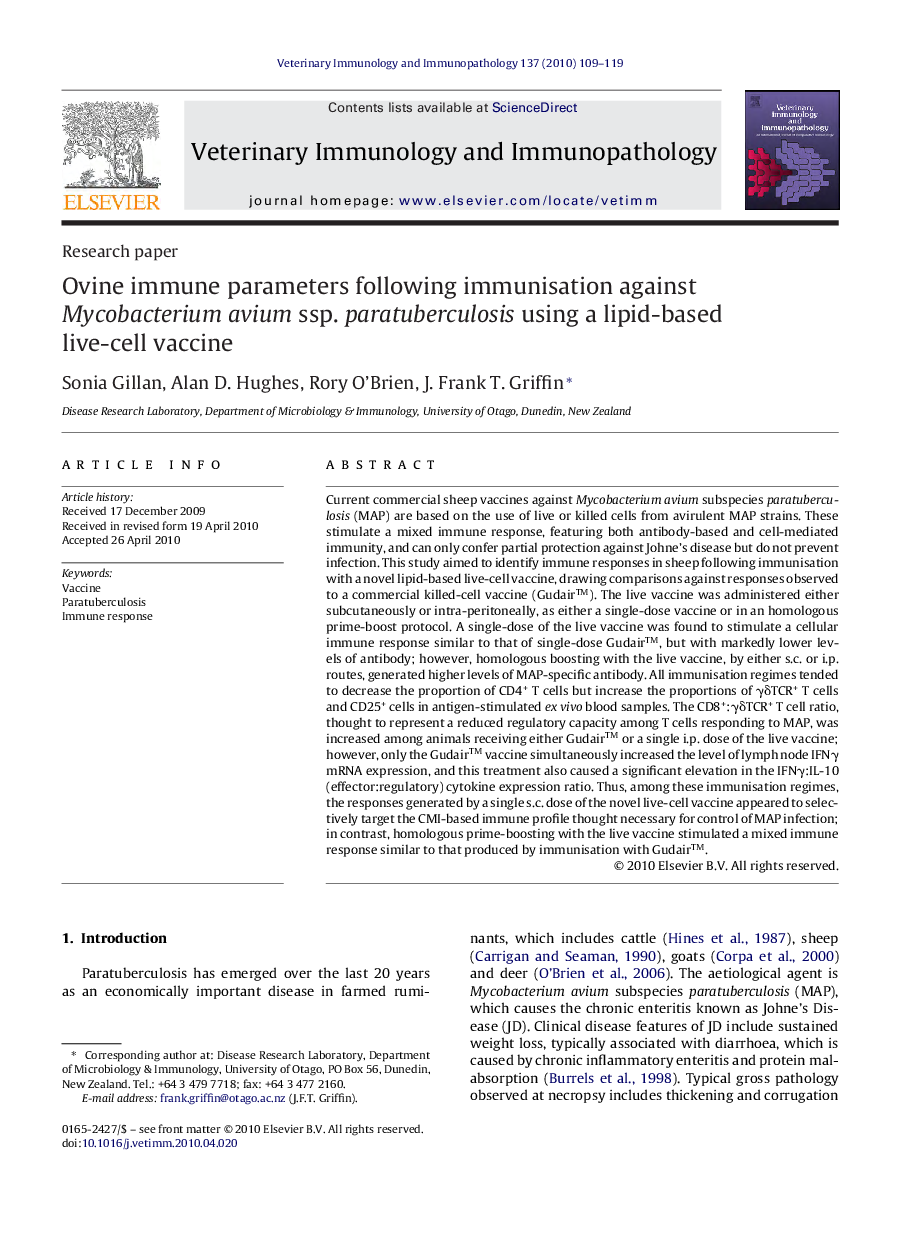| Article ID | Journal | Published Year | Pages | File Type |
|---|---|---|---|---|
| 2462456 | Veterinary Immunology and Immunopathology | 2010 | 11 Pages |
Current commercial sheep vaccines against Mycobacterium avium subspecies paratuberculosis (MAP) are based on the use of live or killed cells from avirulent MAP strains. These stimulate a mixed immune response, featuring both antibody-based and cell-mediated immunity, and can only confer partial protection against Johne's disease but do not prevent infection. This study aimed to identify immune responses in sheep following immunisation with a novel lipid-based live-cell vaccine, drawing comparisons against responses observed to a commercial killed-cell vaccine (Gudair™). The live vaccine was administered either subcutaneously or intra-peritoneally, as either a single-dose vaccine or in an homologous prime-boost protocol. A single-dose of the live vaccine was found to stimulate a cellular immune response similar to that of single-dose Gudair™, but with markedly lower levels of antibody; however, homologous boosting with the live vaccine, by either s.c. or i.p. routes, generated higher levels of MAP-specific antibody. All immunisation regimes tended to decrease the proportion of CD4+ T cells but increase the proportions of γδTCR+ T cells and CD25+ cells in antigen-stimulated ex vivo blood samples. The CD8+:γδTCR+ T cell ratio, thought to represent a reduced regulatory capacity among T cells responding to MAP, was increased among animals receiving either Gudair™ or a single i.p. dose of the live vaccine; however, only the Gudair™ vaccine simultaneously increased the level of lymph node IFNγ mRNA expression, and this treatment also caused a significant elevation in the IFNγ:IL-10 (effector:regulatory) cytokine expression ratio. Thus, among these immunisation regimes, the responses generated by a single s.c. dose of the novel live-cell vaccine appeared to selectively target the CMI-based immune profile thought necessary for control of MAP infection; in contrast, homologous prime-boosting with the live vaccine stimulated a mixed immune response similar to that produced by immunisation with Gudair™.
